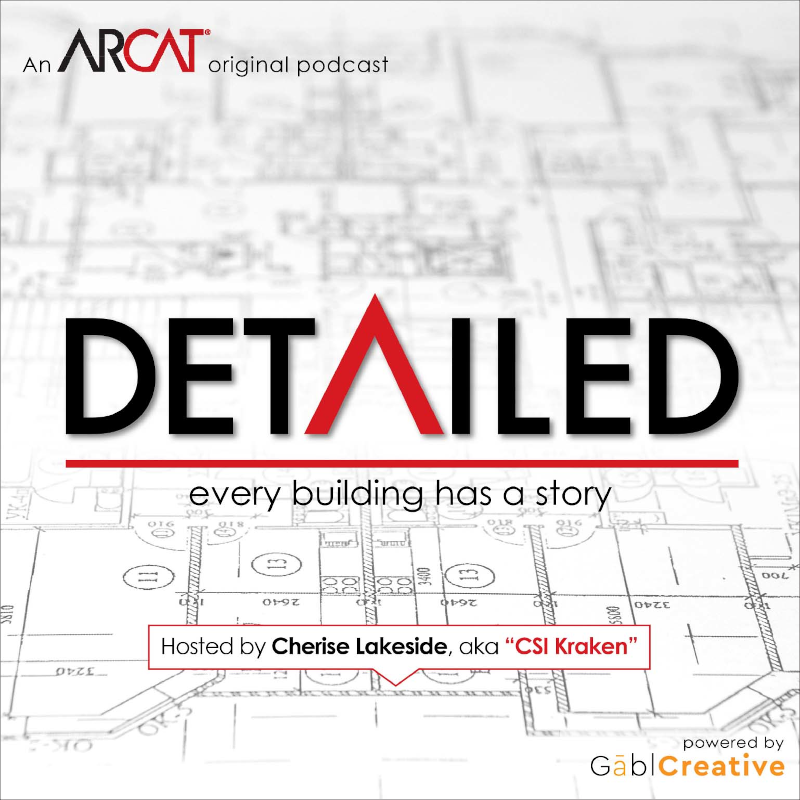|
Contributed by Randy Nishimura Unless you’ve been living under a rock lately, you’re probably aware of the growing interest in and use of mass timber as a construction system in increasingly significant (larger and taller) buildings. I wrote previously following a tour last year of a CLT plant in Riddle, OR, architects are quickly latching onto mass timber because of its sustainable attributes. Mass timber structural products can outperform steel and concrete, whether the metric used is embodied energy or the amount of air and water pollution produced during their extraction and processing. Additionally, wood products sequester carbon and are derived from renewable resources. Despite the greater awareness and appeal of mass timber as a viable alternative to steel and concrete for primary structural systems in larger buildings, its use remains a challenge because current building codes have been slow to recognize its inherent fire-resistive properties, resilience, and ability to be assembled by means capable of resisting seismic forces comparable to steel or concrete alternatives. A recent CSI-Willamette Valley Chapter meeting was a real treat, as Eric McDonnell, a structural engineer and associate with KPFF, built a solid case in favor of mass timber construction systems. As someone who’s been at the forefront of the development of emerging industry standards for CLT use, Eric was eminently qualified to deliver a technically comprehensive, yet concise, primer on the topic to our audience. Eric originally joined the KPFF San Francisco office in 2005, but left in 2010 to respond to a strong need in New Zealand for structural engineers capable of completing damage assessments and helping with the rebuilding process following the Canterbury Region earthquakes. He rejoined KPFF after two years of work in Christchurch, relocating to the firm’s Portland office. Eric’s experience in Christchurch proved invaluable, as the damage wrought by the massive earthquakes served as a real-world laboratory for him and other structural engineers. Eric could see firsthand how the buildings there—designed and constructed in a similar fashion to those here in the U.S.—had performed. The vast majority of buildings engineered to meet modern codes did achieve their life safety performance objective; however, the central business district was cordoned off for two years and more than 1,000 buildings ultimately were demolished because the cost to repair them was too great. In that aftermath, public entities, engineers, and the general public began to ask whether it was reasonable to expect better outcomes in the wake of a seismic event. The notion of low-damage or resilient design took off in earnest. One of the most intriguing low-damage structural systems being implemented since the earthquakes involves the use of post-tensioned CLT rocking walls, which were initially devised by researchers at the University of California, San Diego. Eric worked on the design of a project utilizing this system during his time in New Zealand. Typically, a rocking wall is comprised of CLT panels connected to a steel footing by post-tensioned rods and special U-shaped brackets on the sides of the panels. The rods allow the wall to rock during an earthquake and snap back into its original upright position, minimizing structural damage. Because of his experience with post-tensioned rocking walls, KPFF pegged Eric as a key member of its team studying the potential of mass timber construction. In the process, KPFF has sent him to join the best minds in the field at workshops and symposia around the world. The growing consensus among industry leaders is the real sweet spot for mass timber construction to economically compete with concrete and steel construction is in the mid-rise range of 7 to 12 stories. At this scale, tall post-tensioned rocking walls are among the most promising and resilient lateral systems. The challenge for the mass-timber industry is to overcome current regulatory hurdles. Because they are not prescriptively allowed by current codes, approvals for the already completed and ongoing projects have typically been processed through consent of alternative means & methods. This has and is being done by relying upon the results of rigorous fire-resistive and stress-strain property tests on CLT panels. A consortium of universities (among them UC San Diego, Oregon State University, Colorado State University, Washington State University, and others), testing agencies, and engineering firms like KPFF are conducting these tests. They are not inexpensive. Funding for the tests has come from a variety of sources, including the NSF, Katerra, Simpson Strong-Tie, Tallwood Design Institute, the Forest Products Laboratory, the Softwood Lumber Board, MyTiCon Timber Connectors, D.R. Johnson, and, notably, the City of Springfield. Ultimately, the goal is to realize the adoption of new code provisions that recognize the unique qualities of mass-timber building systems. Once this goal is achieved, mass-timber projects will undoubtedly proliferate. Eric showed us several fascinating videos of some of these tests, including a full-scale shake table test of a mock-up of a two-story mass timber building with resilient CLT rocking walls: This particular test was conducted to provide data for a four-story parking structure in the Glenwood area of Springfield, and also for the 12-story Framework building in Portland, which will be the tallest all-wood post-tensioned rocking wall project in the world when it is completed. Eric and KPFF are involved in the design of both projects (the SRG Partnership is the architect for the Glenwood parking structure, and Lever Architecture is the firm designing the Framework tower). [i]
The mock-up shown in the test includes resilient self-centering post-tensioned CLT rocking walls, similar to the ones KPFF designed for use as part of the Frameworkproject, and near-identical floor-to-wall connections. As Eric explained, the test specimen underwent 10,000+ years of shaking in five days, equivalent to six “San Francisco Design Basis” earthquakes with essentially no damage, and four “Maximum Considered” earthquakes with only limited damage where expected. All in all, the results are impressive. Why mass timber? Beyond its potential as a sustainable and resilient technology, its appeal lies in its aesthetic qualities, how quickly its components can be assembled once on site (reducing time of construction and labor needs), and the promise it holds for the wood products industry, once a dominant player in our regional economy. I believe the time-saving aspect is a game-changer: Once on site, contractors can install the panels quickly, shaving weeks or even months off a construction schedule. The advent of tall wood buildings will certainly challenge the hegemony of concrete and steel structures and reshape building codes as we know them, especially as the momentum toward the increasing use of mass timber builds. Eric is someone who is on the vanguard of the mass timber movement. He truly has been in the right place, at the right time, and presented with the right opportunities at every step of his career. As a result, he has the background, experience, and passion to make modern mass timber projects a reality. With several exciting mass timber buildings like Framework currently in the works, he is definitely helping shape a homegrown industry perfect for Oregon. Thanks Eric for taking the time to share your expertise with us! ____________ FOOTNOTE [i] To date, KPFF has designed seven CLT projects in five different states, with ten more on the boards. The completed projects include the Rocky Mountain Institute Innovation Center in Colorado, and the Albina Yard and Eastside Office projects in Portland.
5 Comments
7/13/2021 06:53:57 am
Excellent writing! We can take away a lot of important information from this article. Keep sharing great posts.
Reply
7/14/2021 08:51:57 am
Thank you for giving us a direct and straight to the point answer! It greatly helped in clearing our confusion.
Reply
11/26/2021 06:27:17 pm
I like how you mentioned that the use of mass timber remains a challenge notwithstanding the higher awareness and appeal of mass timber. My cousin mentioned to me last night that he is planning to have his own home and asked if I have any idea what is the best option to do when designing his home layout as he wants to have structural timber. Thanks to this informative article and I'll be sure to tell him that it will be much better if he consults a trusted structural timber company as they can answer all his inquiries and figure out what is the best layout for his home.
Reply
2/1/2022 05:52:29 am
Look for colors and patterns that will complement the furniture in your space as well as any accessories in the room. Timber flooring comes in a variety of patterns, designs, and colors to give your home a stunning appearance. Casual and contemporary designs with a contrast of darker hues to make it a perfect complement are some of the most popular styles. You can add a variety of other wood components to your project to give it a complete look. All you have to do now is match the styles and put your best foot forward. The whole concept is quite contemporary and would look great in a wide range of decors.
Reply
3/18/2022 01:52:36 pm
I never knew how mass timber construction systems come with environmental benefits. Recently, my dad and uncle said they want to invest in a construction business. Personally, I think it'd be beneficial if my dad considered using eco-friendly materials for his project, so I'll be sure to suggest it now! I appreciate you explaining to us how eco-friendly construction materials are aesthetic too!
Reply
Leave a Reply. |
AboutLet's Fix Construction is an avenue to offer creative solutions, separate myths from facts and erase misconceptions about the architecture, engineering and construction (AEC) industry. Check out Cherise's latest podcast
Get blog post notifications hereArchives
March 2022
Categories
All
|


 RSS Feed
RSS Feed
